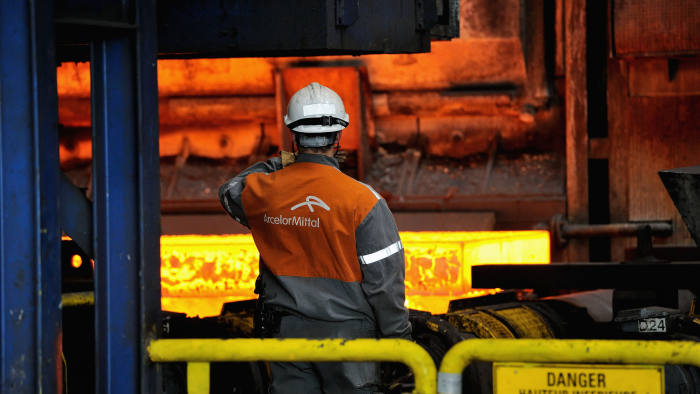The 20 steel companies, which together represent more than 30 percent of global steel production, are expected to cut emissions by less than 50 percent by 2050, which falls short of the 65 percent reduction target set by the International Energy Agency.
“Steel is the industry with the highest carbon emissions,” says Luke Fletcher, senior analyst at CDP, the international nonprofit that produced the new Melting Points report and is working with companies to uncover the financial risks of climate change in their bottom line. .
According to the World Steel Association, the steel industry accounts for 7-9 percent of all direct emissions of fossil fuels.
“Unfortunately, existing steelmaking technologies are already close to the limit of their effectiveness, and therefore achieving the goals of the Paris Agreement on the climate will require radical changes in the industry,” says the CDP report.
This creates risks of a sharp increase in the financial costs of the steel giants. Approximately 86 percent of steel production is covered by existing or planned carbon price markets, and given a $ 100 carbon price scenario by 2040, the average risk for these 20 companies is 14 percent.
The report also shows a significant geographic gap between the highest and lowest performing companies. European and East Asian companies are taking the lead by setting ambitious emission reduction targets and investing in a range of innovative low-carbon technologies. Chinese, Russian and American companies lag behind in terms of disclosure and efficiency in most key areas and have shown little evidence of low-carbon technology development.
Water is used in the steel making process, so it is critical to the survival of the steel industry. In this regard, it is a matter of concern that more than 50 per cent of steel capacity is at high risk of water shortages, such as reduced freshwater supplies and an increase in the frequency and severity of extreme weather events such as drought. Factories operating in China and India are at greatest risk.
The leaders of the World Bank and the International Monetary Fund are encouraging world governments to raise carbon prices to force polluters to pay for the carbon dioxide they release into the atmosphere. Reducing emissions alone is not enough to effectively tackle climate change, they said.
For example, the EU carbon price has more than tripled since 2018 and is expected to rise in the coming years. ArcelorMittal, a multinational steel corporation headquartered in Luxembourg City, recently referred to higher carbon prices in its decision to cut production in May.
According to the CDP report, while 60 percent of companies have set emission reduction targets, only two are meeting the target.
These companies are SSAB, a steel company based in Scandinavia and the United States that aims to achieve carbon neutrality by 2045, and Hyundai Steel, based in South Korea, which aims to achieve 80 percent emissions reductions by 2050.
"The pace at which the steel sector is cutting emissions is too slow for the transition to a low-carbon economy," Fletcher said. "It needs to deploy and commercialize radical technologies to avoid looming carbon costs and remain competitive."
Cleaner technologies mean higher costs
Some steel mills are working on steelmaking technology that will reduce carbon dioxide emissions and energy consumption, for example, when hydrogen steel production and electrolysis using pure electricity.
SSAB, for example develops environmentally friendly technologies for the production of hydrogen steel. ArcelorMittal is working on technology which uses electricity to reduce iron oxides, as well as technology that separates carbon dioxide from waste gases.
However, innovative technologies cannot be commercialized until the 2030s and can increase the cost of steel production by 20-30 percent. Higher manufacturing costs can be a barrier to new technologies, Fletcher said.




